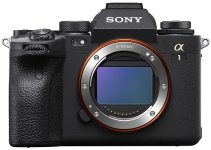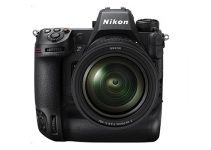Shooting video from or of a moving vehicle can be extremely dangerous. Low-budget productions especially will end up with a filmmaker sitting in an open trunk or leaning precariously out a window. Not great. With a little DIY attitude (and maybe a bit of engineering experience), you can create a much safer chase car camera rig that doesn’t involve hanging your extremities out into danger.
Videographer Zachary Guy has done a lot of the legwork on building a chase car camera rig in this video. He designed, fabricated, and tested a trailer hitch attachment for his rig – which includes a DJI Ronin-series gimbal for smooth footage.
Among the important considerations in building a chase car camera rig are the ability to remotely control the camera rig and have a live view of the image. The build includes a Ronin-M gimbal for stability. However, bumps in the road aren’t perfectly compensated for with the gimbal, so Zachary has an isolation plate built into the rig to minimize the worst of it.
The main design work is the mount between the car hitch and the camera mount. He is going all in with the design using Autodesk Fusion 360. It’s a real CAD workflow.
It’s a relatively simple design with a couple joints and mounting holes for connecting to the trailer hitch. Then there is a bracket that can be set to two positions and is secured with multiple bolts. Having multiple holes he can easily secure down the dampener with the Ronin mount using multiple points to make sure it doesn’t fall off.
The entire rig uses some box tubing. He uses both 2 x 2” and 1 3/4 x 1-3/4” box tubing. He actually has some tools to cut this right so this might put it outside the realm of your average user. Though you might be able to find an engineering friend to do the trick.
He welds the two 45-degree cuts together. This is a solid rig. But, when it was finished it near perfectly fit into the trailer hitch. And it could even support his entire weight as proof. Then just by using some bolts, he could get the Ronin all set up and looking good.
Completing the setup is the camera configuration. He has an HDMI video transmitter along with a receiver connected to a monitor. Then he has an arm holding his phone to use as a controller for the Ronin. The Ronin also has an additional controller for more tactile control over the pan/tilt.
When it is actually taken out on the road for a test you can see some of the roughest bumps, but a Warp Stabilizer moment basically eliminated all shake. It’s a serious process for sure, though I think the time and money investment in a solid rig for your expensive camera to keep yourself out of danger is worth it.
What are your thoughts on this rig? Thinking of building your own?
[source: Zachary Guy]
Order Links:
Disclaimer: As an Amazon Associate partner and participant in B&H and Adorama Affiliate programmes, we earn a small comission from each purchase made through the affiliate links listed above at no additional cost to you.



